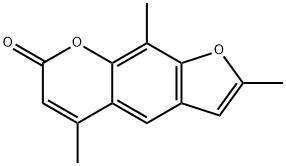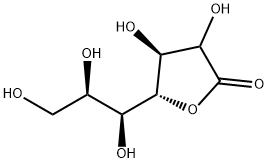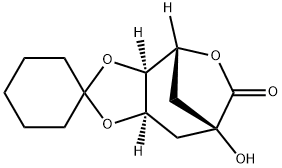4-Heptanolide
- CAS NO.:105-21-5
- Empirical Formula: C7H12O2
- Molecular Weight: 128.17
- MDL number: MFCD00036498
- EINECS: 203-279-9
- SAFETY DATA SHEET (SDS)
- Update Date: 2024-12-18 14:15:30

What is 4-Heptanolide ?
Description
y-Heptalactone has a sweet, nut-like, caramel odor and a malty, caramel, sweet, herbaceous taste. This substance may be obtained in low yields by hydrogenation of ethyl P-furylacrylate;1 by lactoniation of heptenoic acid; also by condensation of methylacrylate butyl alcohol using a catalyst.
Chemical properties
Clear colorless to pale yellow liquid
Chemical properties
γ-Heptalactone has a sweet, coconut-like, caramel and a malty, caramel, sweet odor, and herbaceous taste.
Occurrence
Reported found in green tea, asparagus, beer, strawberry, peach and beef
The Uses of 4-Heptanolide
Food additive.
Preparation
Obtained in low yields by hydrogenation of ethyl β-furylacrylate; by lactoniation of heptonic acid; also by condensation of methylacrylate butyl alcohol using a catalyst.
Definition
ChEBI: Dihydro-5-propyl-2(3H)-furanone is a lactone.
Aroma threshold values
Detection: 400 ppb.
Taste threshold values
Taste characteristics at 15 ppm: sweet, lactonic, creamy, coconut and coumarin, with milky and tobacco Nuances.
Synthesis Reference(s)
Journal of the American Chemical Society, 99, p. 7360, 1977 DOI: 10.1021/ja00464a048
General Description
γ-Heptalactone is a volatile flavor compound found in mangoes, strawberries, pineapples as well as in some dairy products. It is used as a flavoring agent in the food and cosmetic industry.
Hazard
A skin irritant.
Properties of 4-Heptanolide
| Boiling point: | 61-62 °C2 mm Hg(lit.) |
| Density | 0.999 g/mL at 25 °C(lit.) |
| vapor pressure | 2.8hPa at 20℃ |
| FEMA | 2539 | GAMMA-HEPTALACTONE |
| refractive index | n |
| Flash point: | >230 °F |
| storage temp. | Sealed in dry,Room Temperature |
| solubility | Chloroform (Soluble), Methanol (Slightly) |
| form | Oil |
| color | Colourless |
| Odor | at 10.00 % in dipropylene glycol. sweet coconut nutty caramel tonka hay |
| Water Solubility | 23g/L at 20℃ |
| JECFA Number | 225 |
| BRN | 109569 |
| CAS DataBase Reference | 105-21-5(CAS DataBase Reference) |
| NIST Chemistry Reference | 2(3H)-furanone, dihydro-5-propyl-(105-21-5) |
| EPA Substance Registry System | 2(3H)-Furanone, dihydro-5-propyl- (105-21-5) |
Safety information for 4-Heptanolide
| Signal word | Warning |
| Pictogram(s) |
 Exclamation Mark Irritant GHS07 |
| GHS Hazard Statements |
H315:Skin corrosion/irritation |
| Precautionary Statement Codes |
P280:Wear protective gloves/protective clothing/eye protection/face protection. P302+P352:IF ON SKIN: wash with plenty of soap and water. P332+P313:IF SKIN irritation occurs: Get medical advice/attention. |
Computed Descriptors for 4-Heptanolide
New Products
Tert-butyl bis(2-chloroethyl)carbamate (S)-3-Aminobutanenitrile hydrochloride N-Boc-D-alaninol N-BOC-D/L-ALANINOL N-octanoyl benzotriazole 3,4-Dibenzyloxybenzaldehyde 4-Hydrazinobenzoic acid 1,1’-CARBONYLDIIMIDAZOLE R-2-BENZYLOXY PROPIONIC ACID 3-NITRO-2-METHYL ANILINE 4-IODO BENZOIC ACID 4-HYDROXY BENZYL ALCOHOL 4-(3-chloropropyl)morpholine phenylhydrazine hydrochloride (2-Hydroxyphenyl)acetonitrile 4-Bromopyrazole 5-BROMO-2CYANO PYRIDINE 5,6-Dimethoxyindanone 5-broMo-2-chloro-N-cyclopentylpyriMidin-4-aMine 4-methoxy-3,5-dinitropyridine 2-(Cyanocyclohexyl)acetic acid 2-aminopropyl benzoate hydrochloride 1-(4-(aminomethyl)benzyl)urea hydrochloride tert-butyl 4- (ureidomethyl)benzylcarbamateRelated products of tetrahydrofuran







![1,6-DIOXASPIRO[4.4]NONANE-2,7-DIONE](https://img.chemicalbook.in/CAS/GIF/3505-67-7.gif)
You may like
-
 gamma-Heptalactone 99% (GC) CAS 105-21-5View Details
gamma-Heptalactone 99% (GC) CAS 105-21-5View Details
105-21-5 -
 γ-Heptanolactone CAS 105-21-5View Details
γ-Heptanolactone CAS 105-21-5View Details
105-21-5 -
 γ-Heptalactone CAS 105-21-5View Details
γ-Heptalactone CAS 105-21-5View Details
105-21-5 -
 (9H-fluoren-9-yl)methyl (2,5-dioxopyrrolidin-1-yl) carbonate 82911-69-1 98.0%View Details
(9H-fluoren-9-yl)methyl (2,5-dioxopyrrolidin-1-yl) carbonate 82911-69-1 98.0%View Details
82911-69-1 -
 13057-17-5 95.0%View Details
13057-17-5 95.0%View Details
13057-17-5 -
 4-bromoaniline 106-40-1 99.0%View Details
4-bromoaniline 106-40-1 99.0%View Details
106-40-1 -
 5-bromo-2-chlorobenzoic acid 99.0%View Details
5-bromo-2-chlorobenzoic acid 99.0%View Details
21739-92-4 -
 15761-38-3 97.0%View Details
15761-38-3 97.0%View Details
15761-38-3